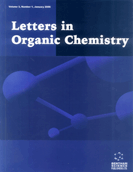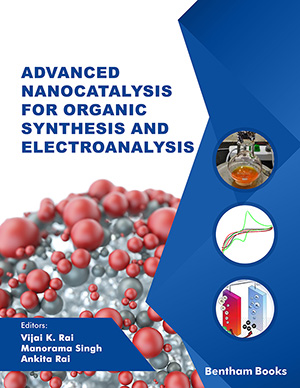Abstract
Anthracyclines are one of the most effective cancer treatments ever created, but these compounds are somewhat cardiotoxic to some patients, causing heart failure. The likelihood of such adverse effects restricts the overall prescribed dose of anthracyclines for patients. Based on the pathophysiology of anthracycline-induced cardiotoxicity, the cardiotoxicity plausibly originates from a reduction reaction of a single electron in its structure to form surplus reactive oxygen species (ROS) or two electrons reducing and converting into C-13 alcohol metabolites. While excess ROS is the probable cause for acute cardiotoxicity brought on by anthracyclines, it is not all characteristic of progressive cardiomyopathy. The formed secondary alcohol metabolites could also profoundly accelerate cardiotoxicity, which then develops into cardiomyopathy and eventually congestive heart failure. This review offers an overview of the molecular pathways of anthracycline-induced cardiotoxicity, emphasizing the roles of secondary alcohol metabolites of anthracyclines and/or their morbific role as ROS. The most effective ways to minimize or terminate anthracycline-induced cardiotoxicity are also covered.
Keywords: Anthracycline, cardiotoxicity, reactive oxygen species, secondary alcohol metabolite, prevention, treatment.
[http://dx.doi.org/10.1111/1440-1681.13036] [PMID: 30244497]
[http://dx.doi.org/10.1002/aoc.6576]
[http://dx.doi.org/10.1002/aoc.6660]
[http://dx.doi.org/10.1016/j.jacc.2014.06.1167] [PMID: 25169180]
[http://dx.doi.org/10.1155/2021/8863789] [PMID: 33574985]
[http://dx.doi.org/10.1016/j.molliq.2021.115381]
[http://dx.doi.org/10.1002/cmdc.202000131] [PMID: 32314528]
[http://dx.doi.org/10.1016/j.canlet.2015.10.002] [PMID: 26454214]
[http://dx.doi.org/10.1016/j.acmx.2013.08.006] [PMID: 25001055]
[http://dx.doi.org/10.3390/ijms23031414] [PMID: 35163335]
[http://dx.doi.org/10.1007/s11864-018-0547-8] [PMID: 29752560]
[http://dx.doi.org/10.1016/j.pcad.2006.10.002] [PMID: 17329180]
[http://dx.doi.org/10.1016/j.molliq.2021.116498]
[http://dx.doi.org/10.1016/j.fct.2019.110834] [PMID: 31577924]
[http://dx.doi.org/10.1039/C8CP06776G] [PMID: 30702122]
[http://dx.doi.org/10.1016/j.bpj.2011.06.015] [PMID: 21767490]
[http://dx.doi.org/10.1021/ml3002852] [PMID: 24900668]
[http://dx.doi.org/10.1016/j.jbiotec.2017.12.024] [PMID: 29307836]
[http://dx.doi.org/10.1007/978-90-481-9704-0_5]
[http://dx.doi.org/10.1007/128_2008_5]
[http://dx.doi.org/10.2174/157339611796892265] [PMID: 22212952]
[http://dx.doi.org/10.1080/14756366.2020.1780226] [PMID: 32552137]
[http://dx.doi.org/10.3390/ijms19113480] [PMID: 30404148]
[http://dx.doi.org/10.18632/oncotarget.13475] [PMID: 27888811]
[http://dx.doi.org/10.3892/mco.2019.1854] [PMID: 31289672]
[http://dx.doi.org/10.7326/0003-4819-91-5-710] [PMID: 496103]
[http://dx.doi.org/10.1093/jnci/djn206] [PMID: 18664656]
[http://dx.doi.org/10.1159/000265166] [PMID: 20016174]
[http://dx.doi.org/10.1016/j.jacc.2009.02.050] [PMID: 19520246]
[http://dx.doi.org/10.1200/JCO.2011.40.1273] [PMID: 22614988]
[http://dx.doi.org/10.1200/JCO.2007.14.9401] [PMID: 18669466]
[http://dx.doi.org/10.1007/s11906-010-0146-y] [PMID: 20842465]
[http://dx.doi.org/10.3389/fcvm.2020.00035] [PMID: 32226791]
[http://dx.doi.org/10.1155/2019/9474823] [PMID: 31885826]
[http://dx.doi.org/10.1155/2017/1521020] [PMID: 29181122]
[http://dx.doi.org/10.3390/life11020105] [PMID: 33573162]
[http://dx.doi.org/10.2174/092986709788186228] [PMID: 19442138]
[http://dx.doi.org/10.1039/D1TB00551K] [PMID: 34059858]
[http://dx.doi.org/10.1007/s11897-020-00489-5] [PMID: 32964378]
[http://dx.doi.org/10.1039/D1CS00044F] [PMID: 34128512]
[http://dx.doi.org/10.3390/ijms22094642] [PMID: 33924958]
[http://dx.doi.org/10.1038/s42255-022-00591-z] [PMID: 35760871]
[http://dx.doi.org/10.1038/s41420-019-0182-6] [PMID: 31231550]
[http://dx.doi.org/10.1111/cts.12857] [PMID: 32770710]
[http://dx.doi.org/10.1152/physrev.00026.2013] [PMID: 24987008]
[http://dx.doi.org/10.2174/1389200216888150915112039] [PMID: 26321196]
[http://dx.doi.org/10.1007/978-1-60761-956-7_5]
[http://dx.doi.org/10.3389/fenvs.2014.00053]
[http://dx.doi.org/10.1080/14789450.2019.1645602] [PMID: 31361162]
[http://dx.doi.org/10.1002/cphy.c180017]
[http://dx.doi.org/10.2174/157340311799960645] [PMID: 22758622]
[http://dx.doi.org/10.1186/s40959-016-0012-4] [PMID: 33530140]
[http://dx.doi.org/10.1007/s10741-020-10063-9] [PMID: 33319255]
[http://dx.doi.org/10.1517/14740338.2011.589834]
[http://dx.doi.org/10.1124/dmd.115.065110] [PMID: 26265744]
[http://dx.doi.org/10.1002/aoc.5672]
[http://dx.doi.org/10.3389/fphar.2021.670479] [PMID: 34149423]
[http://dx.doi.org/10.1016/j.ijcha.2015.11.004] [PMID: 27213178]
[http://dx.doi.org/10.1074/jbc.M508343200] [PMID: 16423826]
[http://dx.doi.org/10.1155/2015/795602] [PMID: 26491536]
[http://dx.doi.org/10.1007/s10637-017-0443-2] [PMID: 28283780]
[http://dx.doi.org/10.1007/s00520-015-3008-y] [PMID: 26563179]
[http://dx.doi.org/10.3390/ijms23031912] [PMID: 35163838]
[http://dx.doi.org/10.3389/fcvm.2022.867873] [PMID: 35528837]
[http://dx.doi.org/10.1021/mp5000373] [PMID: 24673622]
[http://dx.doi.org/10.3389/fcvm.2022.847012] [PMID: 35497981]
[http://dx.doi.org/10.1124/pr.56.2.6] [PMID: 15169927]
[http://dx.doi.org/10.3389/fphar.2022.811406] [PMID: 35211017]
[http://dx.doi.org/10.3892/ijmm.2019.4188] [PMID: 31115493]
[http://dx.doi.org/10.3390/cancers2020338] [PMID: 24281073]
[http://dx.doi.org/10.1016/j.mam.2007.09.012] [PMID: 18037483]
[http://dx.doi.org/10.5402/2012/137289] [PMID: 23119185]
[http://dx.doi.org/10.1159/000455823] [PMID: 28122377]
[http://dx.doi.org/10.3389/fcvm.2020.00026] [PMID: 32258060]
[http://dx.doi.org/10.1186/s40959-019-0054-5] [PMID: 32154024]
[http://dx.doi.org/10.1634/theoncologist.2017-0672] [PMID: 30120159]
[http://dx.doi.org/10.1161/CIRCHEARTFAILURE.115.002661] [PMID: 26747861]
[http://dx.doi.org/10.1007/s11886-016-0731-z] [PMID: 27108361]
[http://dx.doi.org/10.1007/s00246-015-1176-7] [PMID: 25939787]
[http://dx.doi.org/10.4061/2011/134679] [PMID: 21331374]
[http://dx.doi.org/10.3389/fcvm.2022.912329] [PMID: 35757327]
[http://dx.doi.org/10.2147/CMAR.S313874] [PMID: 34234558]
[http://dx.doi.org/10.1248/bpb.b16-00624] [PMID: 28049940]
[http://dx.doi.org/10.1016/j.ijpharm.2020.120117] [PMID: 33259901]
[http://dx.doi.org/10.3390/pharmaceutics9020012] [PMID: 28346375]
[http://dx.doi.org/10.1016/j.jconrel.2012.03.020] [PMID: 22484195]
[http://dx.doi.org/10.3390/pharmaceutics14040778] [PMID: 35456613]
[http://dx.doi.org/10.4103/0973-1482.139267] [PMID: 25579518]
[http://dx.doi.org/10.2147/OTT.S162003] [PMID: 30087568]
[PMID: 18019828]
[http://dx.doi.org/10.2217/nnm.13.118] [PMID: 23914966]
[http://dx.doi.org/10.1371/journal.pone.0133569] [PMID: 26204517]
[PMID: 19707541]
[http://dx.doi.org/10.1016/j.breast.2009.05.004] [PMID: 19656681]
[PMID: 18203425]
[http://dx.doi.org/10.1016/j.gore.2019.07.012] [PMID: 31467958]
[http://dx.doi.org/10.1159/000207504] [PMID: 19262067]
[http://dx.doi.org/10.3390/cancers13174421] [PMID: 34503231]
[http://dx.doi.org/10.1016/j.jaccao.2019.08.003] [PMID: 34396164]
[http://dx.doi.org/10.1186/s40959-019-0036-7] [PMID: 32154008]
[http://dx.doi.org/10.3389/fcvm.2022.907266] [PMID: 35811736]
[http://dx.doi.org/10.1016/j.ppedcard.2014.09.006]
[http://dx.doi.org/10.1021/acs.jmedchem.0c02157] [PMID: 33750129]
[http://dx.doi.org/10.1186/s40959-019-0050-9] [PMID: 32154021]
[http://dx.doi.org/10.1038/s41523-021-00342-5] [PMID: 34625570]
[http://dx.doi.org/10.2147/CMAR.S47238] [PMID: 25246808]
[PMID: 27978799]
[http://dx.doi.org/10.1517/14656566.8.8.1039] [PMID: 17516870]
[http://dx.doi.org/10.1016/j.breast.2011.12.012] [PMID: 22260846]
[http://dx.doi.org/10.1002/ejhf.1620] [PMID: 31721395]
[http://dx.doi.org/10.1007/s10557-016-6711-0] [PMID: 28185035]
[http://dx.doi.org/10.3390/chemosensors10010033]
[http://dx.doi.org/10.5041/RMMJ.10366] [PMID: 31002639]
[http://dx.doi.org/10.1039/D1NP00059D] [PMID: 34951423]
[http://dx.doi.org/10.1016/j.urolonc.2012.04.010] [PMID: 22575238]
[http://dx.doi.org/10.1016/j.molliq.2021.117850]
[http://dx.doi.org/10.1016/j.lungcan.2014.01.012] [PMID: 24530204]
[http://dx.doi.org/10.1007/s10637-007-9069-0] [PMID: 17628745]
[http://dx.doi.org/10.1200/JCO.2008.18.1974] [PMID: 18854562]
[http://dx.doi.org/10.1097/JTO.0b013e31802f1cd9] [PMID: 17410034]
[http://dx.doi.org/10.3727/096504020X15898794315356] [PMID: 32430093]
[http://dx.doi.org/10.1021/acs.jmedchem.0c01191] [PMID: 33064004]
[http://dx.doi.org/10.1186/1476-4598-9-259] [PMID: 20868484]
[http://dx.doi.org/10.1161/CIR.0000000000000556] [PMID: 29437116]
[http://dx.doi.org/10.3389/fcvm.2022.863314] [PMID: 35528842]
[http://dx.doi.org/10.1016/j.vph.2009.01.001] [PMID: 19344651]
[http://dx.doi.org/10.3389/fphar.2020.00788] [PMID: 32536868]
[http://dx.doi.org/10.1097/CRD.0000000000000252] [PMID: 31008768]
[http://dx.doi.org/10.2174/157340311799960681] [PMID: 22758625]
[http://dx.doi.org/10.1016/j.ihj.2018.06.011] [PMID: 30595329]
[PMID: 23056717]
[http://dx.doi.org/10.3390/antiox9020159] [PMID: 32079097]
[http://dx.doi.org/10.1016/j.jacc.2019.03.495] [PMID: 31171092]
[http://dx.doi.org/10.1016/j.annonc.2019.10.023] [PMID: 31959335]
[PMID: 27508008]
[http://dx.doi.org/10.1016/j.jacc.2012.07.067] [PMID: 23141499]
[http://dx.doi.org/10.1016/j.cjca.2014.11.020] [PMID: 25662284]
[http://dx.doi.org/10.1016/j.jacc.2011.05.025] [PMID: 21851890]
[http://dx.doi.org/10.1016/S0140-6736(13)62348-X] [PMID: 24315619]
[http://dx.doi.org/10.1002/med.21592] [PMID: 31074028]
[http://dx.doi.org/10.3390/nu11092090] [PMID: 31487802]
[http://dx.doi.org/10.1016/j.biopha.2021.111708] [PMID: 34243633]
[http://dx.doi.org/10.1097/MCA.0000000000000187] [PMID: 25369999]
[http://dx.doi.org/10.3389/fcvm.2015.00029] [PMID: 26664900]
[http://dx.doi.org/10.1177/1559325818790158] [PMID: 30116167]
[http://dx.doi.org/10.1016/j.ejcts.2008.11.027] [PMID: 19147369]
[http://dx.doi.org/10.1016/j.pharmthera.2009.07.003] [PMID: 19638284]
[http://dx.doi.org/10.1016/j.bbadis.2007.05.002] [PMID: 17572073]
[http://dx.doi.org/10.3389/fendo.2019.00584] [PMID: 31507534]
[http://dx.doi.org/10.1111/1755-5922.12189] [PMID: 27097055]
[http://dx.doi.org/10.1016/j.rpor.2017.01.004] [PMID: 28507459]
[http://dx.doi.org/10.1093/cvr/cvx246] [PMID: 29272330]
[http://dx.doi.org/10.1002/ejhf.196] [PMID: 25410653]
[http://dx.doi.org/10.1016/j.jacc.2013.02.072] [PMID: 23583763]
[http://dx.doi.org/10.1161/JAHA.117.006513] [PMID: 29118031]
[http://dx.doi.org/10.1186/s13063-019-3963-6] [PMID: 32019575]


























